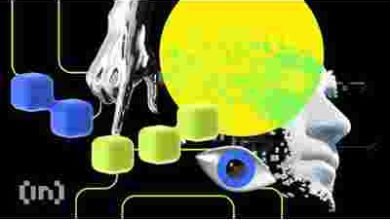The Future of Interaction Design: Augmented Reality and Virtual Reality

The Future of Interaction Design: Augmented Reality and Virtual Reality
Introduction
With evolving technology, the field of interaction design is undergoing a significant transformation. Augmented Reality (AR) and Virtual Reality (VR) are emerging as powerful tools in creating immersive experiences for users. In this article, we will delve into the future prospects of interaction design, exploring the potential impact of AR and VR on user experiences.
The Rise of Augmented Reality
What is Augmented Reality?
Augmented Reality is a technology that overlays digital elements, such as graphics, images, or information, onto the real world, enhancing and augmenting our perception of reality. This technology has gained popularity in various fields, from gaming and entertainment to healthcare and education.
How does Augmented Reality enhance user experiences?
AR allows users to interact with digital content and virtual objects in their real environment. For example, imagine exploring a museum with an AR app that brings ancient artifacts to life, providing contextual information and interactive experiences. This immersive and interactive interface enhances user engagement, making the overall experience more informative and enjoyable.
The Promise of Virtual Reality
What is Virtual Reality?
Virtual Reality is a technology that simulates a completely artificial digital environment, isolating users from the real world and immersing them in a virtual experience. Using VR headsets, users can explore and interact with these simulated environments in a way that feels natural and realistic.
How does Virtual Reality revolutionize user experiences?
VR has the potential to transform the way we perceive and interact with digital content. Whether it’s gaming, training simulations, or virtual tours, VR provides an unparalleled level of immersion, allowing users to physically and emotionally engage with a virtual environment. This level of presence and interactivity has a profound impact on how users experience and interact with digital content.
The Future of Interaction Design
As AR and VR continue to evolve, the future of interaction design looks incredibly exciting. With these technologies, designers can create innovative and immersive experiences that bridge the gap between the digital and physical worlds. Here are some ways AR and VR will shape the future of interaction design:
1. Seamless Integration into Daily Life
As AR and VR become more accessible and user-friendly, they will seamlessly integrate into our daily lives. From shopping experiences to workplace collaboration, these technologies will blur the boundaries between what is real and what is digital.
2. Personalized and Contextual Experiences
AR and VR open up new possibilities for personalized and contextual experiences. Users will be able to create digital twin avatars or customize their virtual reality environments to suit their preferences. This customization will allow for deeply personalized and meaningful interactions.
3. Enhanced Collaboration
AR and VR have the potential to revolutionize collaboration by creating virtual workspaces where teams can collaborate from different physical locations. This will lead to increased productivity, efficiency, and creativity.
Conclusion
The future of interaction design is undoubtedly being shaped by the advancements in Augmented Reality and Virtual Reality technology. These immersive technologies have the power to transform the way we interact with digital content, offering endless possibilities for creating engaging and meaningful user experiences.
FAQs
Q: How is interaction design different in AR and VR?
In AR, the design focuses on overlaying digital content onto the real world, making it blend seamlessly. In VR, the design is centered around creating a cohesive and immersive virtual environment. Both require careful consideration of usability, user engagement, and intuitive interactions.
Q: What are some challenges in interaction design for AR and VR?
One challenge is creating natural and intuitive user interactions that are easy to understand and learn. Designers also need to consider the constraints of the technology, such as rendering limitations or motion sickness. Striking a balance between user comfort, realism, and visual fidelity is crucial.
Q: How will AR and VR impact industries?
AR and VR have the potential to revolutionize various industries. From healthcare and education to gaming and entertainment, these technologies can enhance training, provide immersive experiences, and open up new possibilities for communication and collaboration.
By embracing Augmented Reality and Virtual Reality, interaction design is entering a new era of user experiences. The future promises exciting advancements, as designers continue to push the boundaries of how we interact with the digital world.



